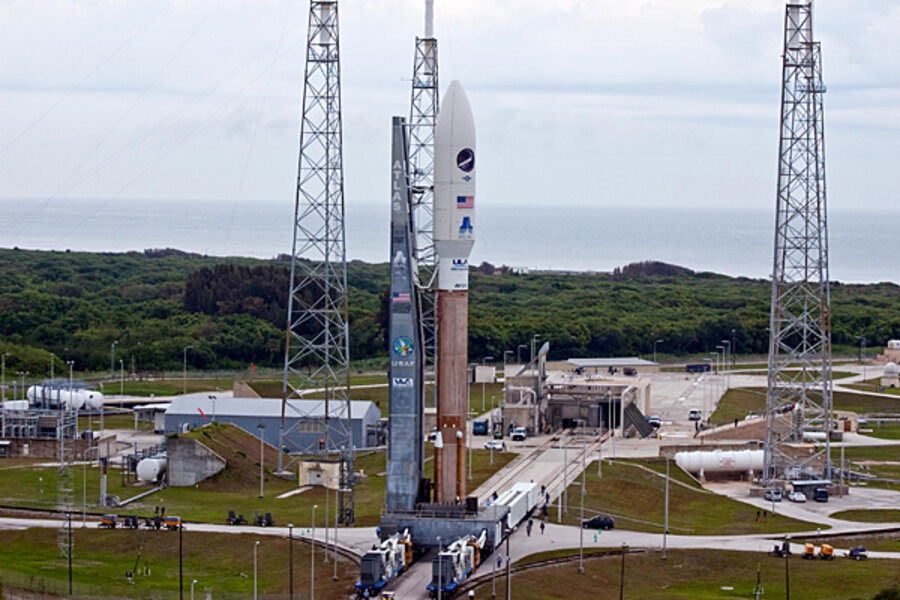Pentagon X-37 space plane to launch amid secrecy
Loading...
| Washington
The X-37 unmanned spacecraft is expected to blast off into its mysterious orbit tonight and may be gone for the better part of a year.
The 29-foot spacecraft resembles a mini space shuttle and will launch from Cape Canaveral in Florida between about 7:50 p.m. and 9 p.m. Eastern time atop an Atlas V rocket. (Click here for the webcast.)
Other than the launch itself, which Air Force officials jokingly concede they couldn’t keep secret even if they tried, most of what the X-37B Orbital Test Vehicle program is all about is classified.
IN PICTURES: The X-37 space plane
That has led to speculation that the spacecraft is an American step toward the militarization of space – an assertion that the Pentagon refutes. The craft could also be used to conduct experiments in space, or to fix or return to earth damaged satellites, experts say.
As the launch has approached, however, some details about the spacecraft and its mission have begun to surface.
Some details emerge
Broadly speaking, the program is expected to test the Air Force's ability to launch the spacecraft, keep it up for months at a time, return it to earth, and fly again. The length of its visit to space appears central to the mission.
The X-37 is able to fly for as long as 270 days powered, the Air Force hopes, by a combination of lithium ion batteries and a set of solar panels. Air Force officials will want to see how well the lithium ion batteries onboard stand up to the long deployment. The batteries are “recharged” by a set of solar panels inside the spacecraft that will emerge once the craft has deployed from the rocket that will carry it into space.
“There have been a few cases where satellites have been designed and flown with lithium ion batteries, but they are the newest sort of power storage technology that we’re using in space, so this again expands the knowledge base on lithium ion batteries,” said Gary Payton, Deputy Under Secretary for the Air Force’s space programs, in a conference call with reporters.
When the X-37 returns, Air Force officials will be particularly interested to see how much of an impact the long trip has had on the vehicle, and what is required to get it flying again. The hope is that it won’t take too much time to get operational again. The faster they can get it back into the air, the more cost effective the program will be.
A true space plane
Officials are hoping they can get it back up to snuff within 15 days of landing. The goal is to have it act like a true space plane more than a small version of the space shuttle, which requires an enormous amount of servicing and money to relaunch.
“I don’t think we’ve set any specific goal, but I would think handling this bird more like an SR-71 and less like a routine space launch vehicle would be a good objective,” said Payton, referring to the SR-71 Blackbird reconnaissance plane that was itself once classified.
In the future, the service is eager to build and launch a second “tail” – another X-37B – but it will likely wait until the first flight returns to earth before they put the second one up in the air, Payton said.
The X-37's departure had been expected any time this week, but the late return of the Space Shuttle delayed its launch for a day or so. The Orbital Test Vehicle, or OTV as it’s called, is expected to return to earth and land at Vandenberg Air Force Base, Calif., though military officials say they don’t know when that will actually be.
The program has been around for years, started by NASA but then picked up by the Pentagon’s research and development arm, the Defense Advanced Research Projects Agency, before moving to the Air Force. Because the program had moved from one agency to another, and because of the separate research-and-development costs borne by private industry, Payton said he could not say how much the program costs altogether.





